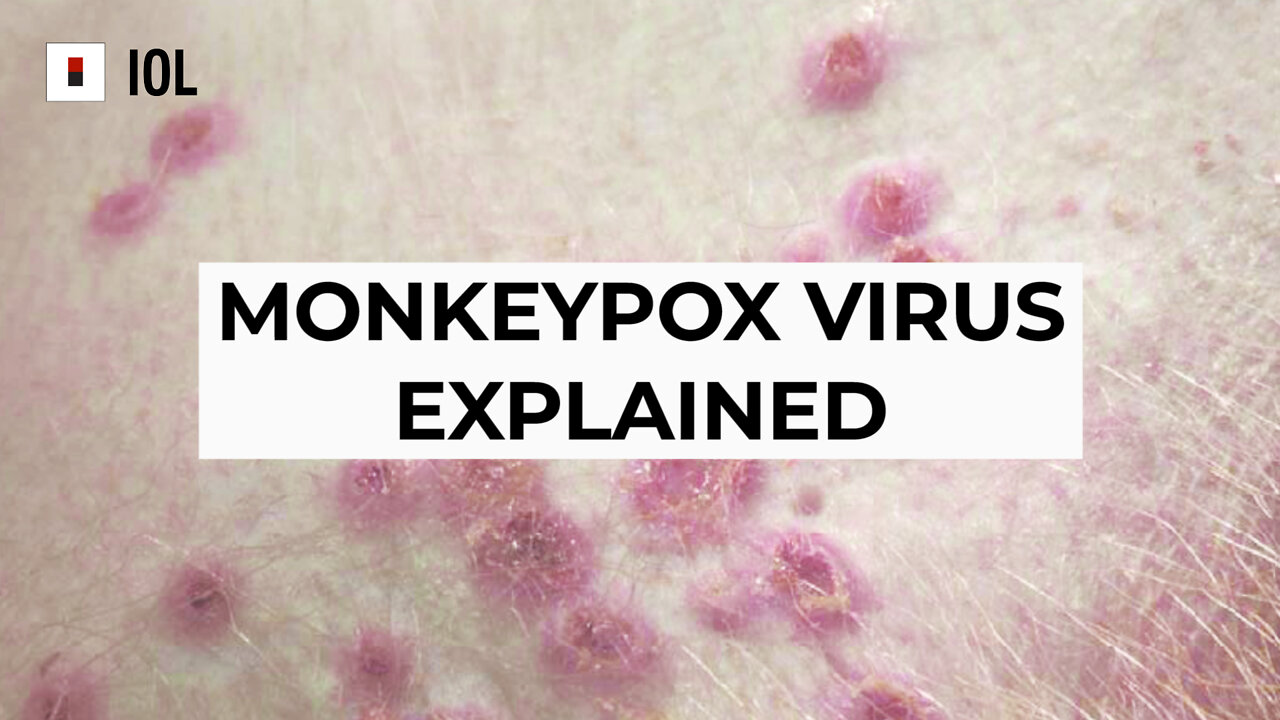Premium Only Content

WATCH: The Monkeypox virus explained
If you’ve been on the internet or social media this past week, you may have noticed that the Monkeypox virus has been reported in some countries around the world.
This may be disheartening news for some, considering we are still battling the Covid-19 pandemic.
More specifically, in South Africa, we are trying to get through the unofficial Coronavirus 5th wave.
The National Institute for Communicable Diseases (NICD) confirmed that there are no known cases in South Africa, however, the risk of the virus entering the country’s borders is a reality.
So why are international experts concerned about Monkeypox?
Here’s what you need to know:
The latest outbreak of monkeypox has reached 17 countries, according to the World Health Organization (WHO), with 110 confirmed cases and a further 205 suspected cases.
Historically, the virus has been most commonly reported in west and central Africa but recent cases have been picked up in parts of the United States and Europe.
Unlike Covid-19, Monkeypox isn’t a new disease. In fact, the first confirmed human case was in 1970, when the virus was isolated from a child suspected of having smallpox in the Democratic Republic of Congo (DRC).
Monkeypox is a virus from the same family as smallpox and is usually transmitted from animals to humans, but transmission also occurs between people by close contact with body fluids and respiratory droplets.
Previous monkeypox cases were rare and usually mild, however it can still potentially cause severe illness.
Health officials are now concerned that more cases will arise with increased travel.
The first case in the current outbreak was a traveller who returned to the United Kingdom from Nigeria.
Last week, the WHO held an emergency meeting to discuss the recent outbreak of monkeypox.
The organization said the recent outbreaks reported so far are atypical, as they are occurring in countries where the virus does not regularly circulate.
Scientific research is underway to locate the origin of the current cases and whether anything about the virus has changed.
The NICD said the current outbreak is unlikely to progress to being a global emergency.
However, the institute did advise travellers entering South Africa to report any illness to a healthcare professional.
How the virus presents:
Within the first five days to two weeks of infection, the disease initially presents with flu-like symptoms, including a fever, headache, body pains and swollen lymph nodes.
Skin eruptions or a rash may begin to appear around three days after the appearance of the fever. The rash tends to be more concentrated on the face, hands, feet and genitals.
In some cases, a rash and puss-filled boils cover the body of those infected.
Recovery can take between two to four weeks, while skin lesions usually scab over in 14 to 21 days.
Treatment:
Because monkeypox is closely related to smallpox, the smallpox vaccine could provide protection against infection from both viruses.
Health officials in the United States are in the process of releasing some FDA approved monkeypox vaccines, the Jynneos vaccine, to patients.
Monkeypox is usually a self-limited disease, which means patients can recover without taking any form of medicine.
-
 0:19
0:19
IOL-IndependentOnline
4 days ago $0.01 earnedMaster Jay's debut album 'Ta Jay' set to redefine Amapiano with fresh narratives and groovy beats
164 -
 7:09
7:09
ValueEngineering
3 years agoConcrete Cantilever Explained Compression a HUGE FACTOR in Stability watch and learn part 4
252 -
 1:00:43
1:00:43
Trumpet Daily
19 hours ago $4.60 earnedThat Big, Beautiful Wall Around the Vatican - Trumpet Daily | Apr. 28, 2025
10.5K16 -
 12:40
12:40
Degenerate Jay
12 hours ago $0.42 earnedThe Perfect RoboCop Versus Terminator Game Needs To Be Made!
12.3K2 -
 8:17
8:17
VSOGunChannel
15 hours ago $0.59 earnedYou Were Put on a Government Watch List || DECLASSIFIED
11.4K7 -
 35:14
35:14
Steph & Kayls
17 hours ago $0.67 earnedSpicing Things Up: How To Navigate Adding A Third To The Bedroom | Ep. 4
15.3K5 -
 28:59
28:59
Film Threat
12 hours agoTHUNDERBOLTS* EARLY REACTIONS | Film Threat After Dark
21.5K5 -
 8:02:12
8:02:12
Rebel News
4 days ago $213.34 earnedELECTION NIGHT LIVE: Rebel News Canada coverage with Ezra Levant, Sheila Gunn Reid & Special Guests
435K236 -
 1:24:54
1:24:54
Badlands Media
16 hours agoBaseless Conspiracies Ep. 130: Iberia Blackout, Green Energy Failures, and Grave-Robbing Government Experiments
89.2K33 -
 2:12:50
2:12:50
FreshandFit
9 hours agoModern Men VS Modern Women
58.4K37